
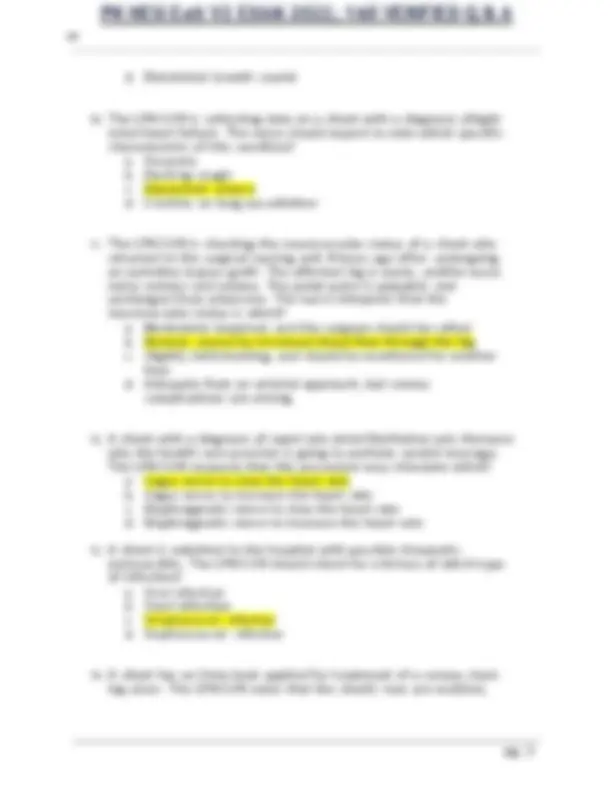
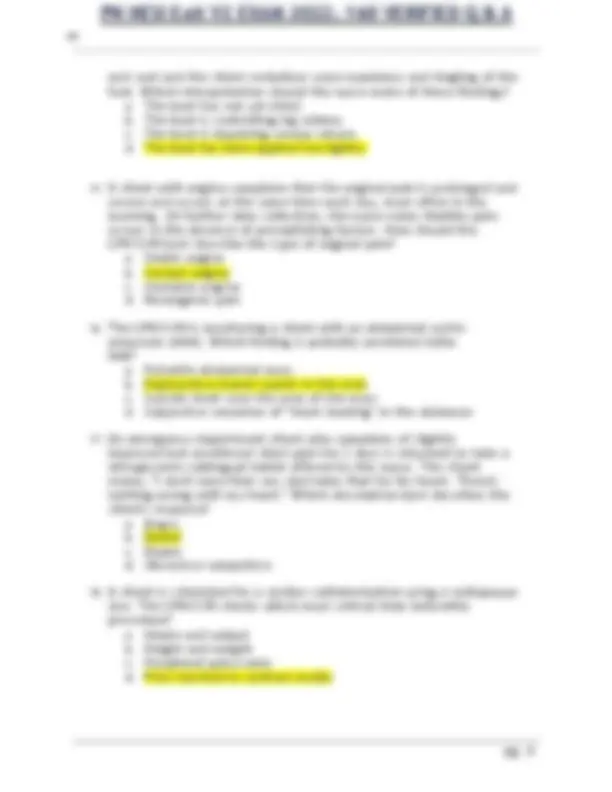
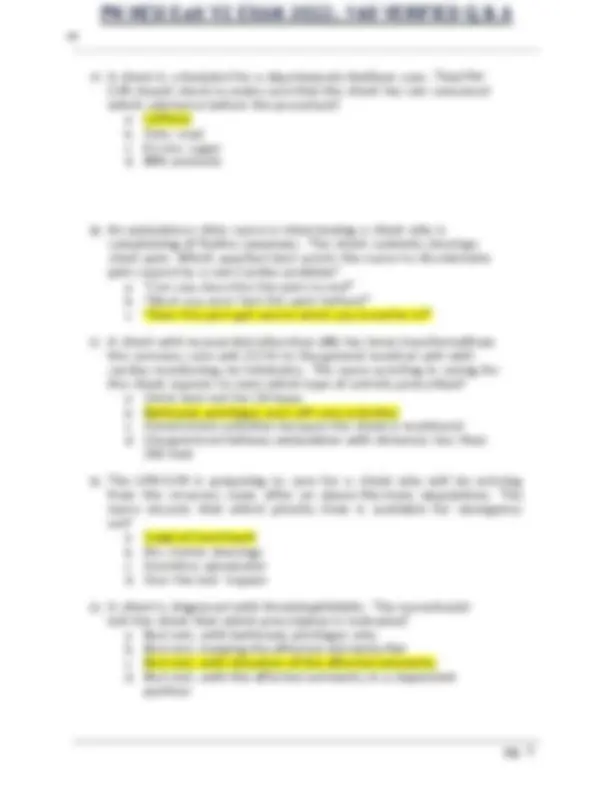
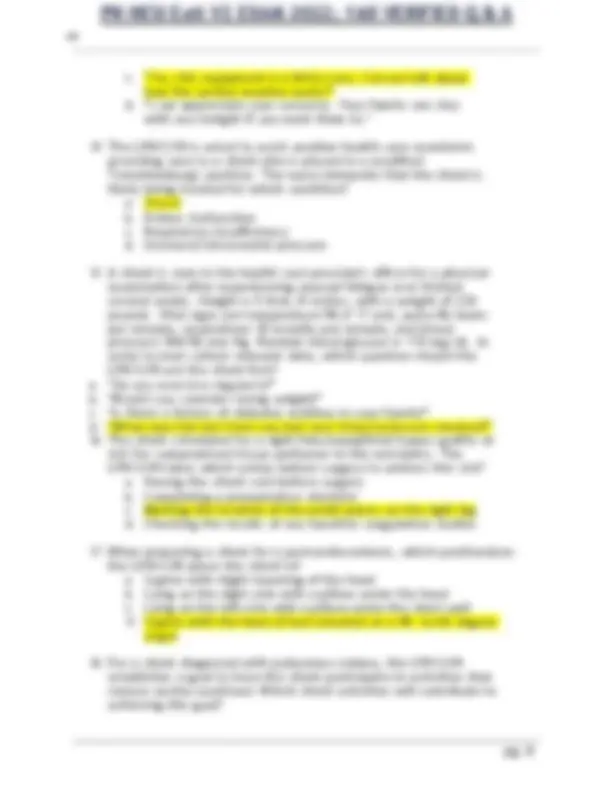
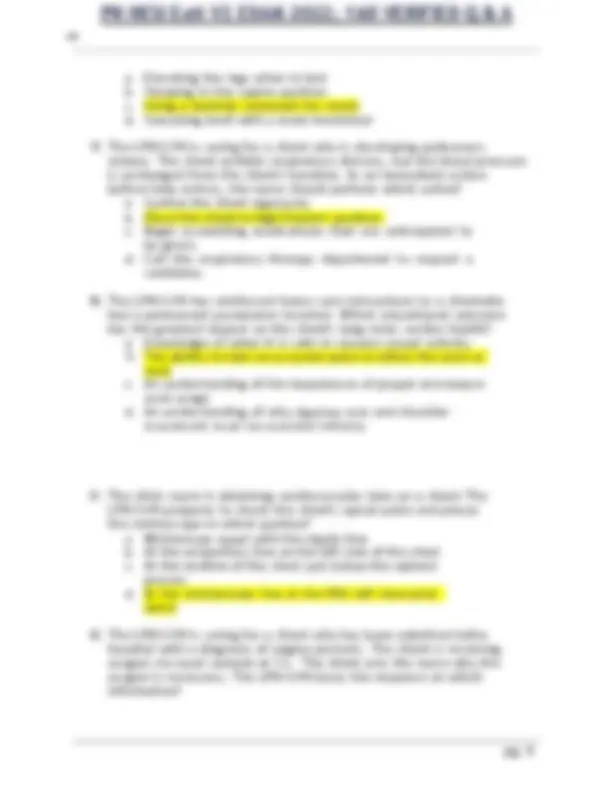
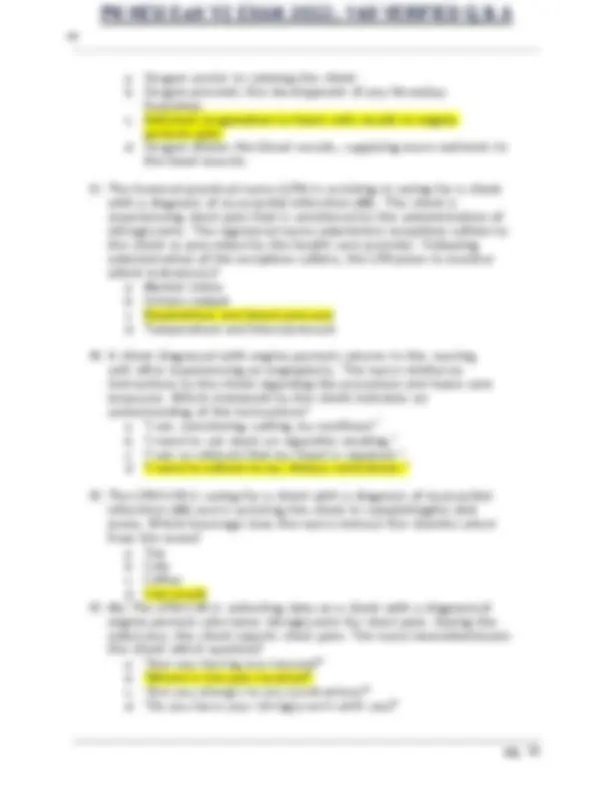
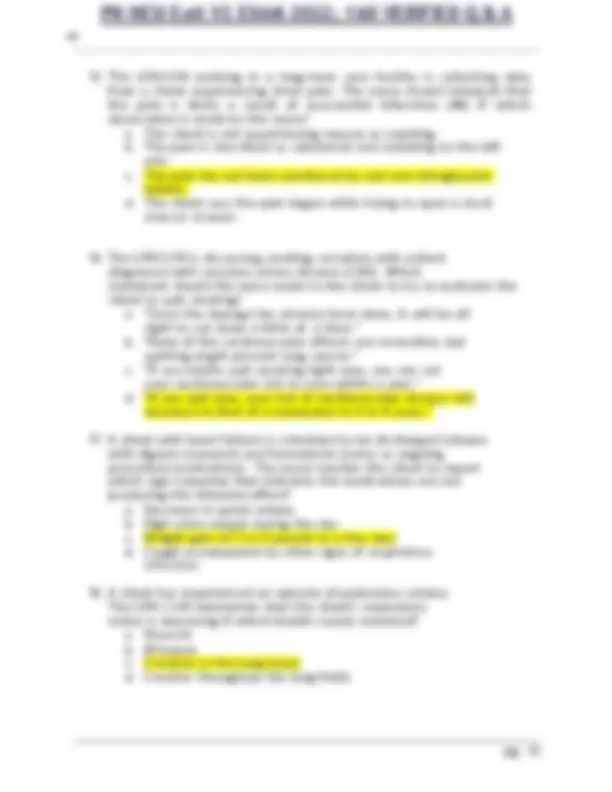
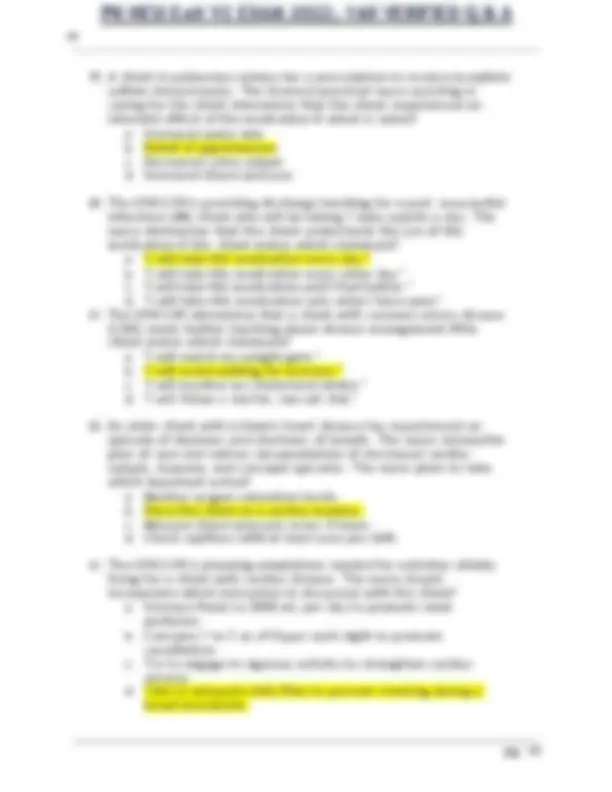
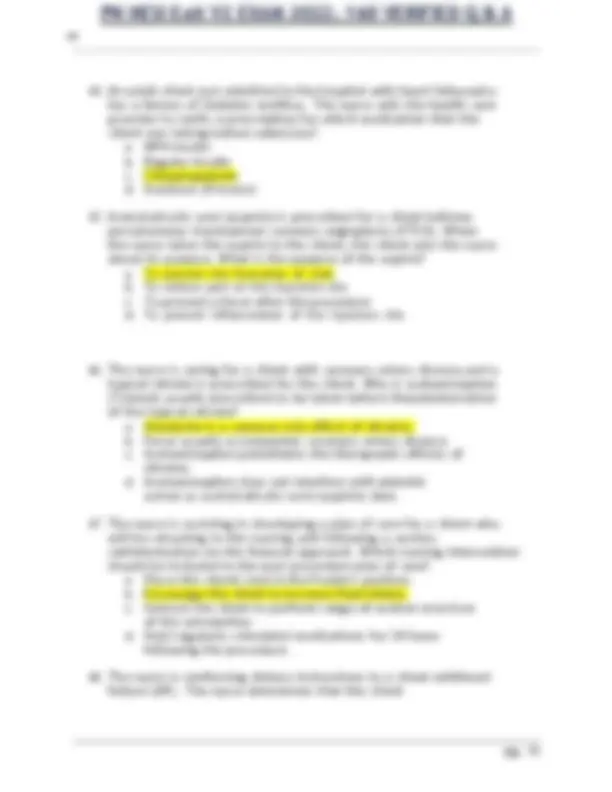
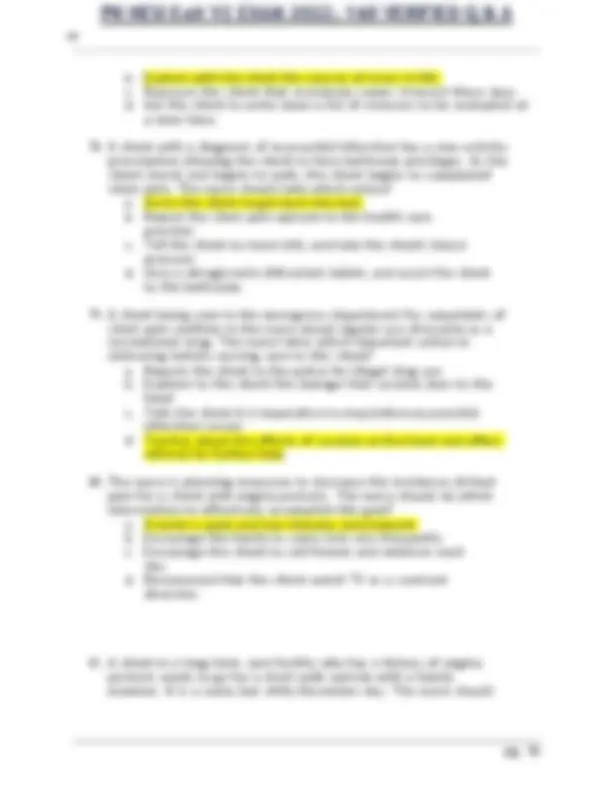
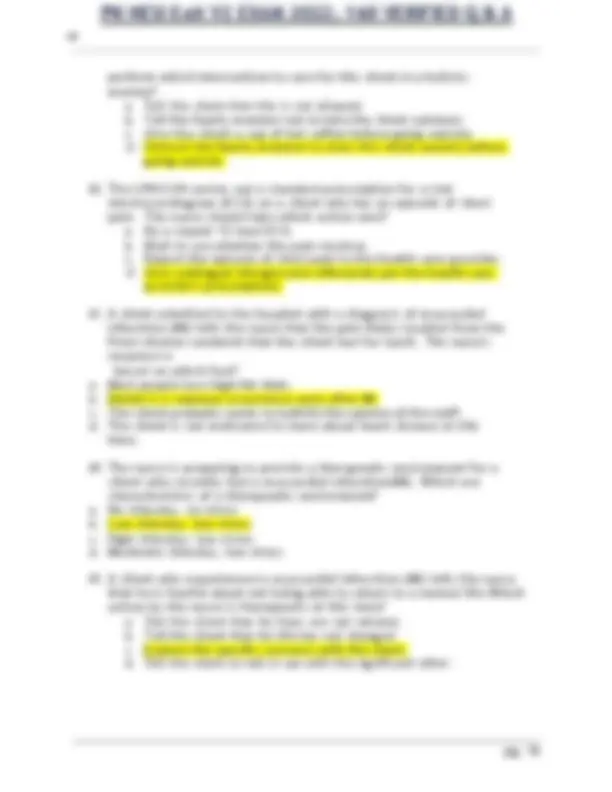
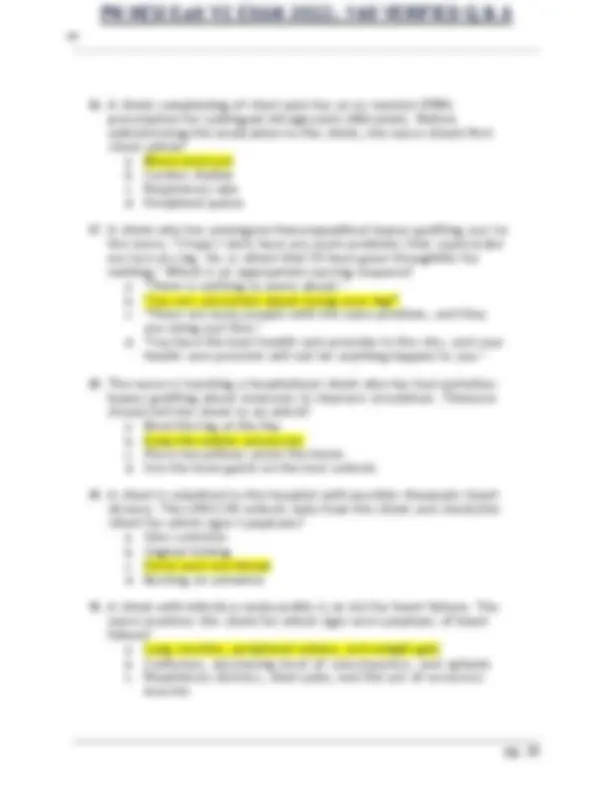
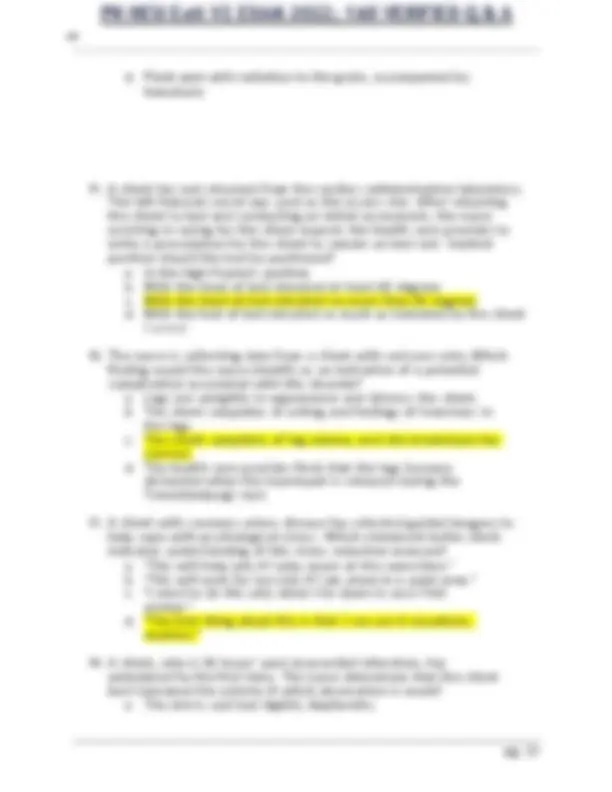
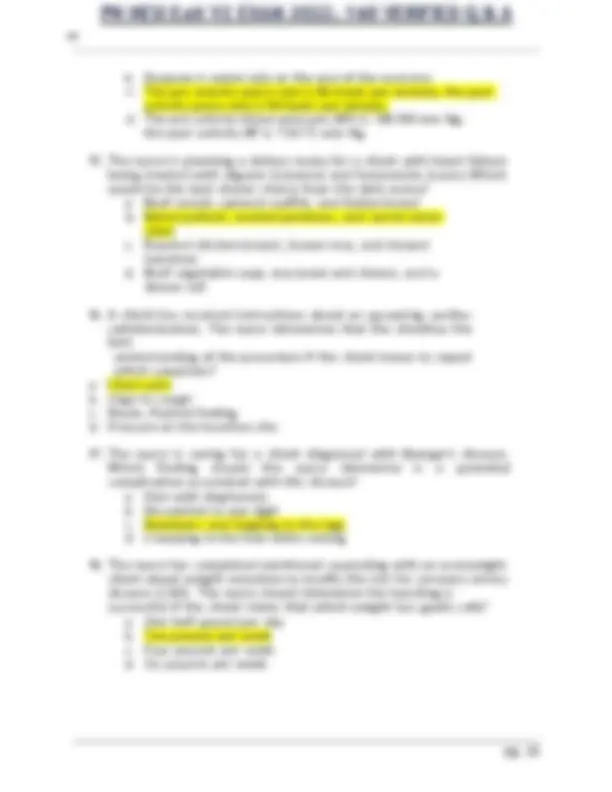
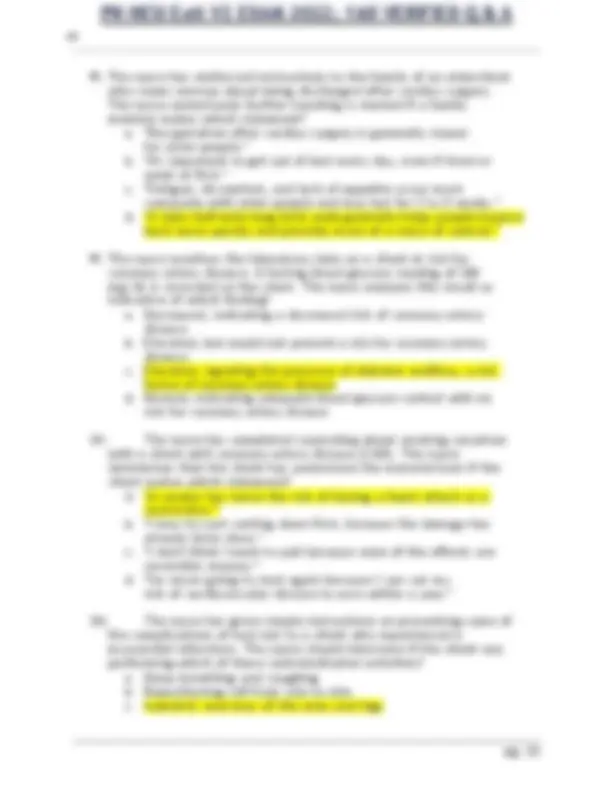
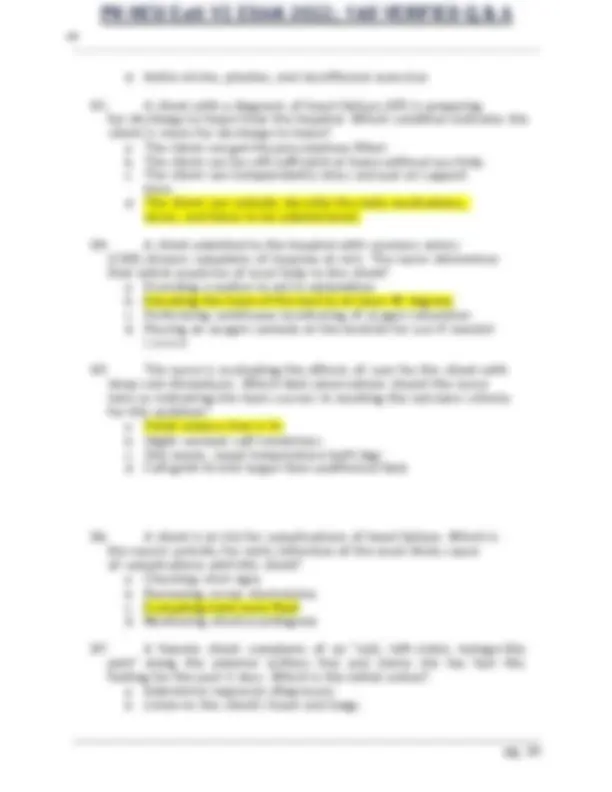
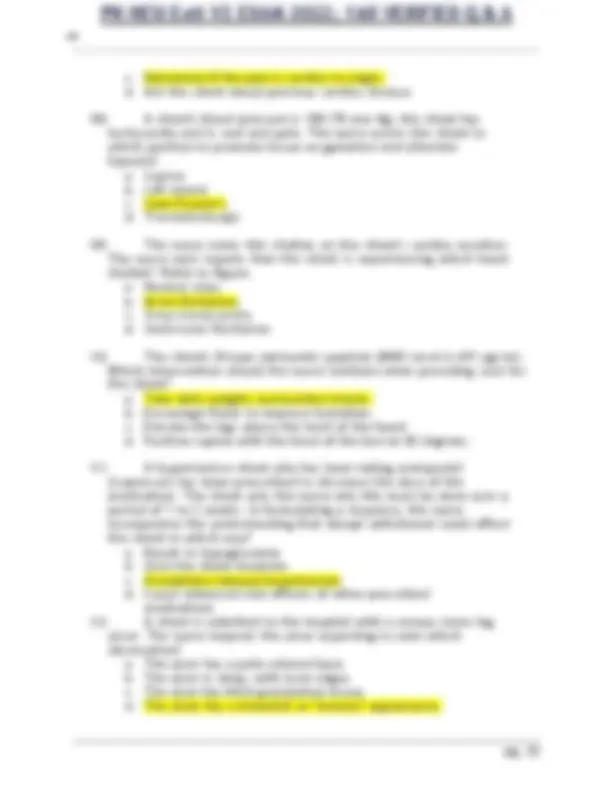
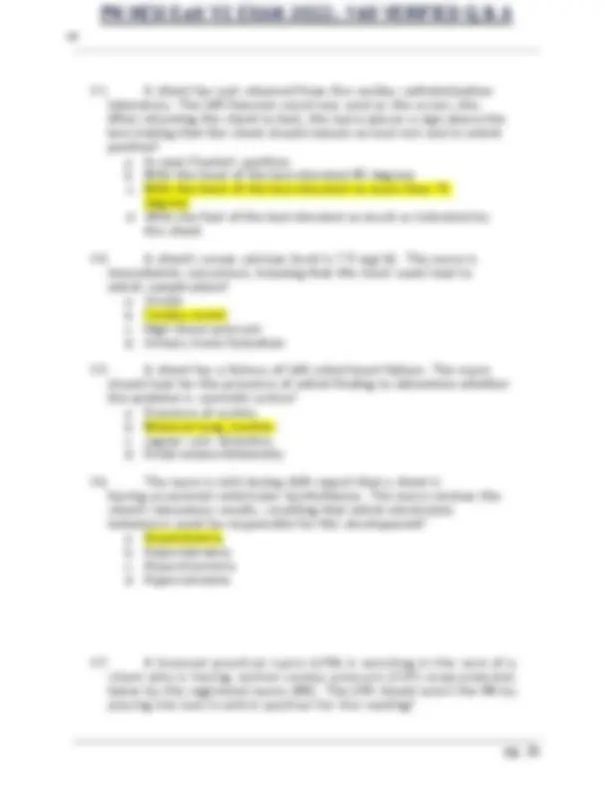
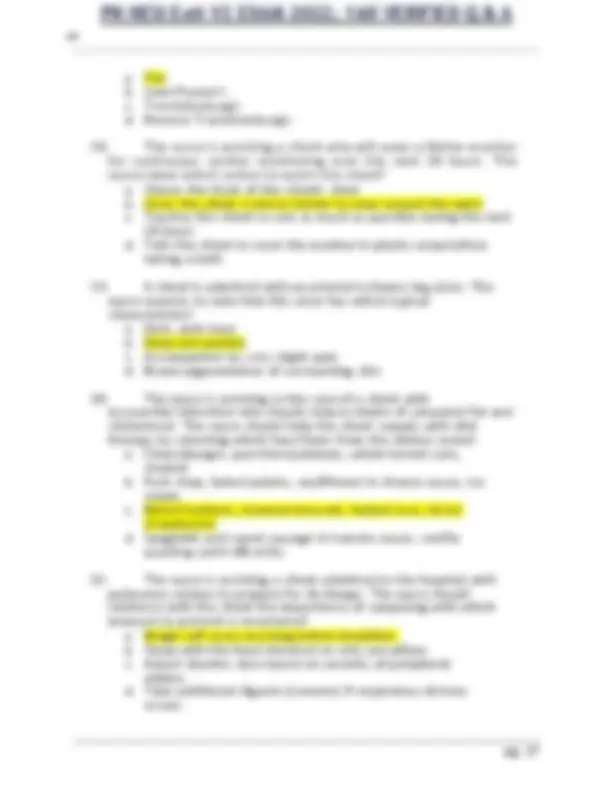
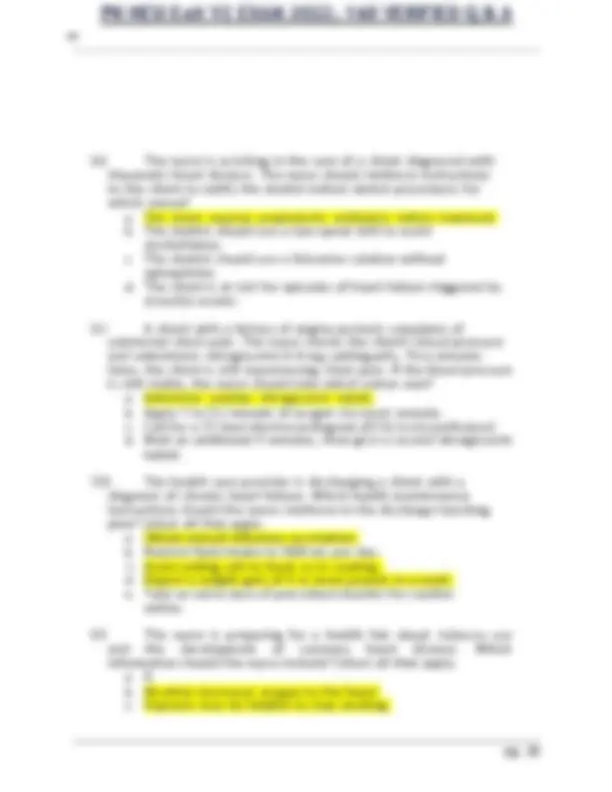
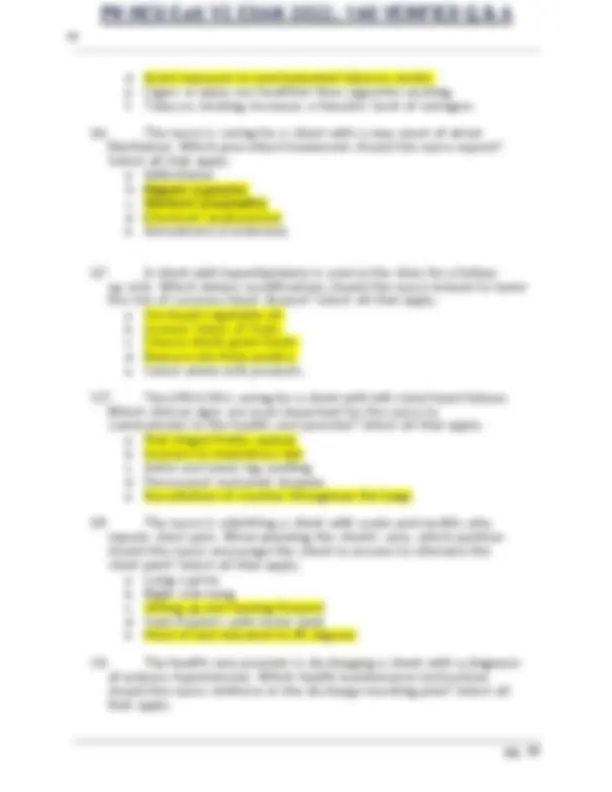
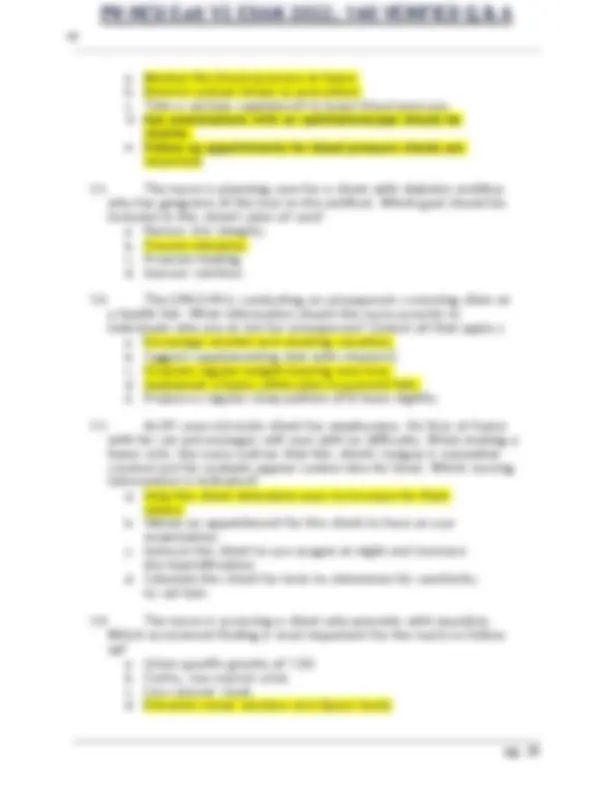
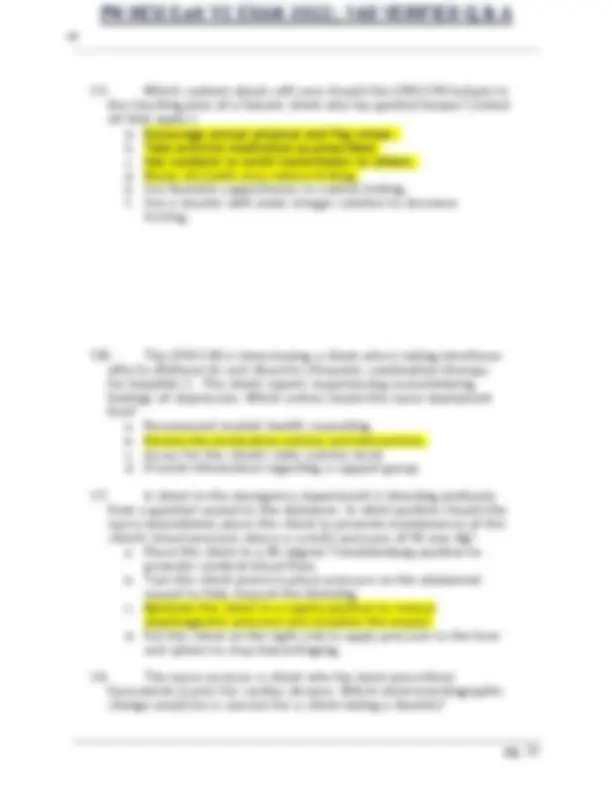

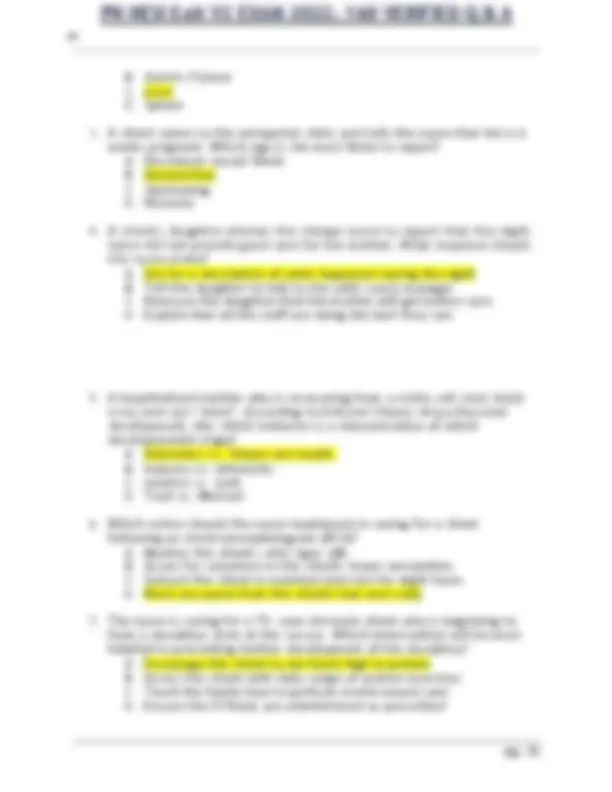
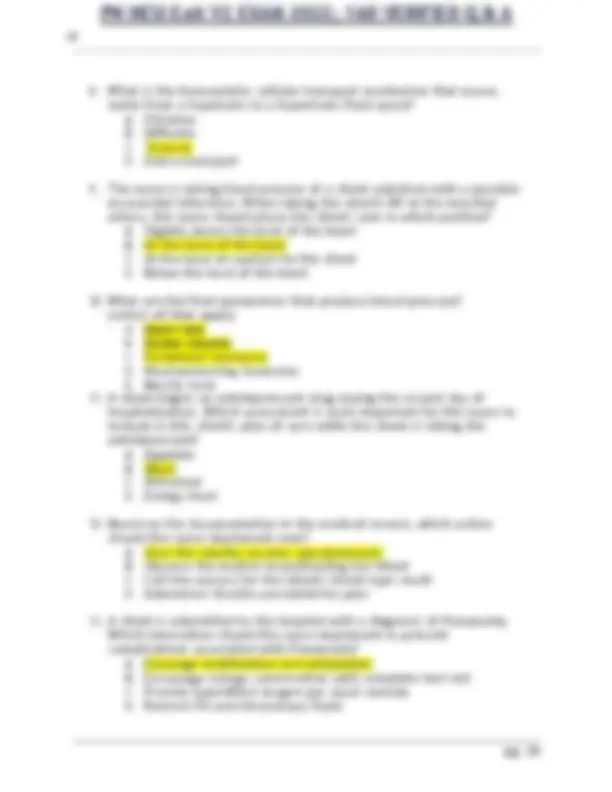
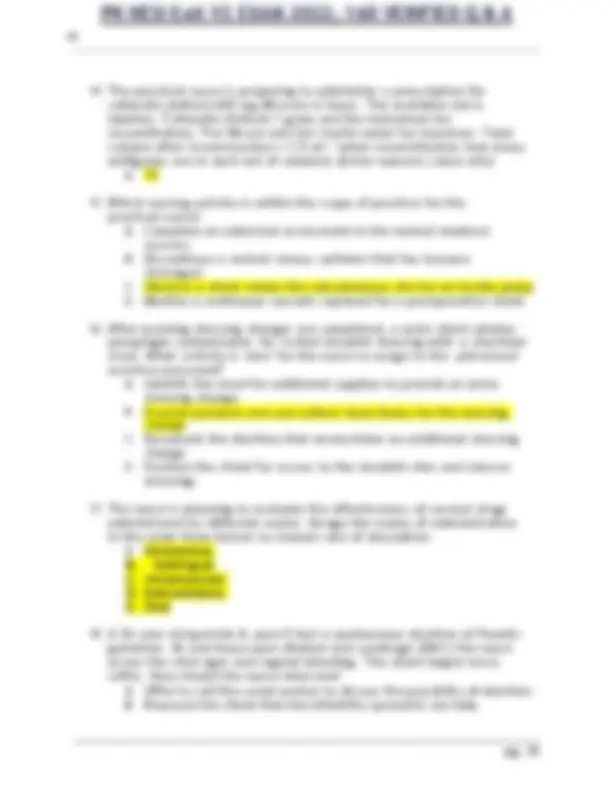
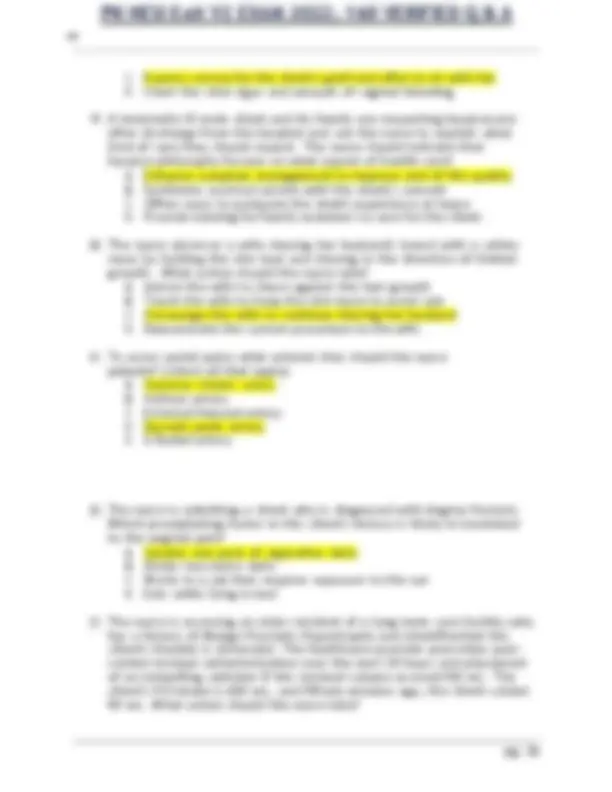
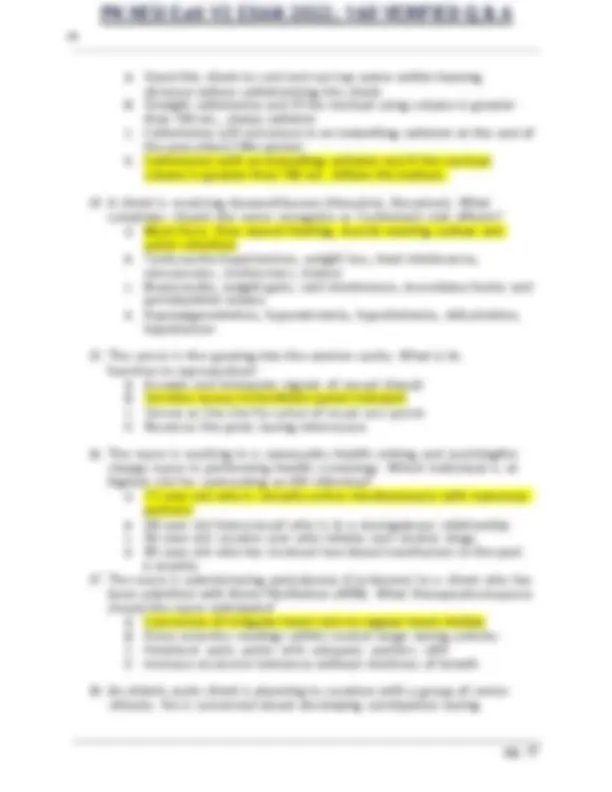
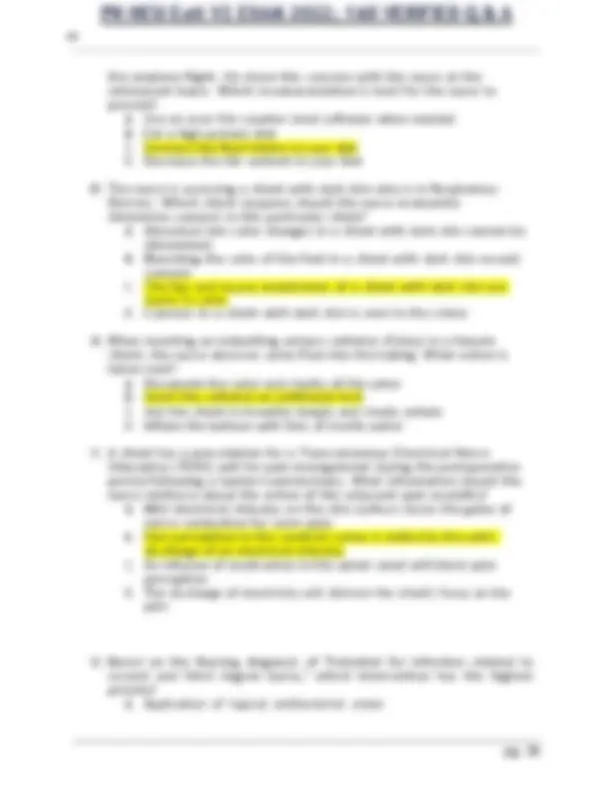
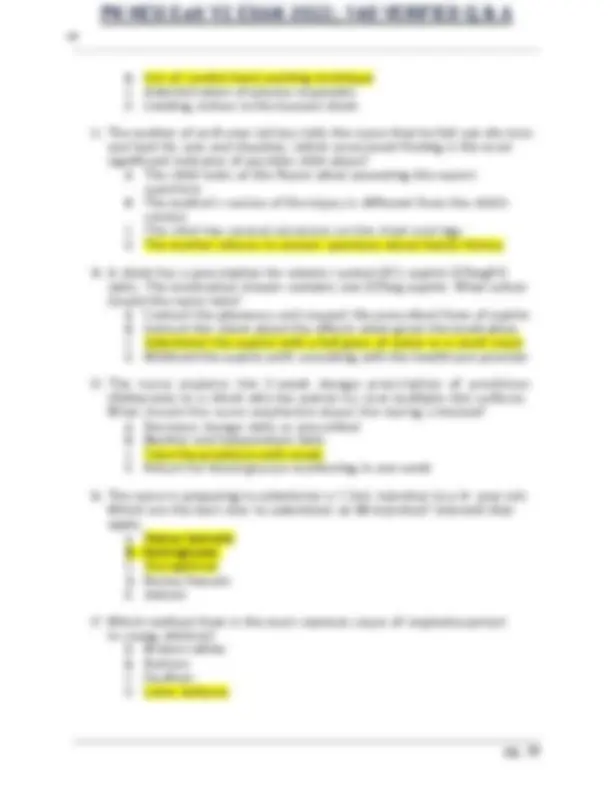
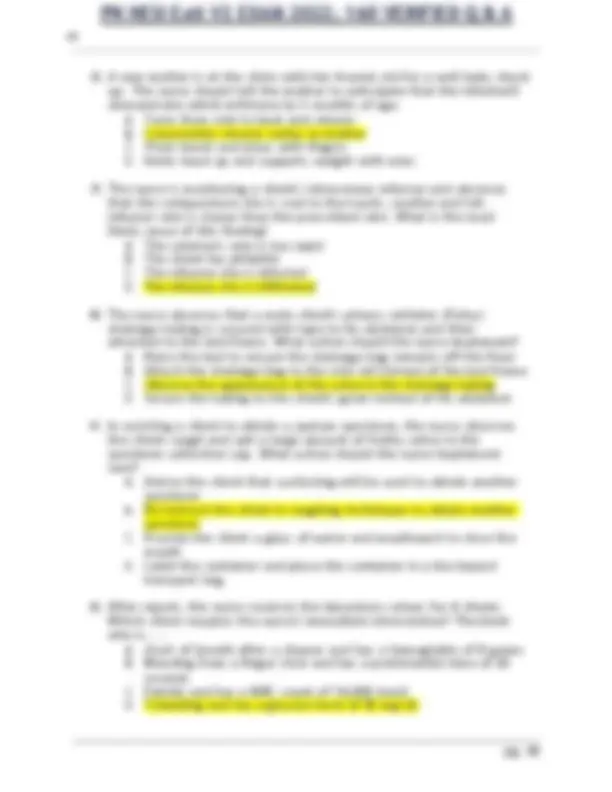
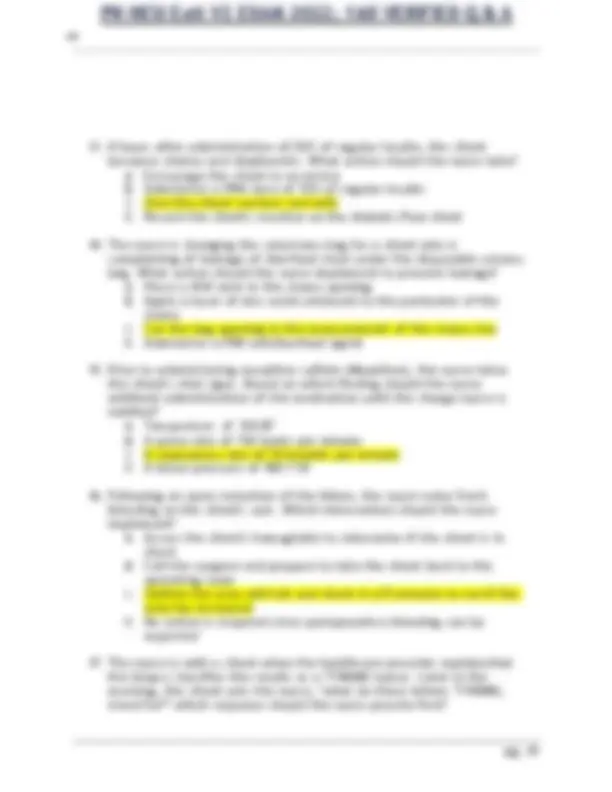
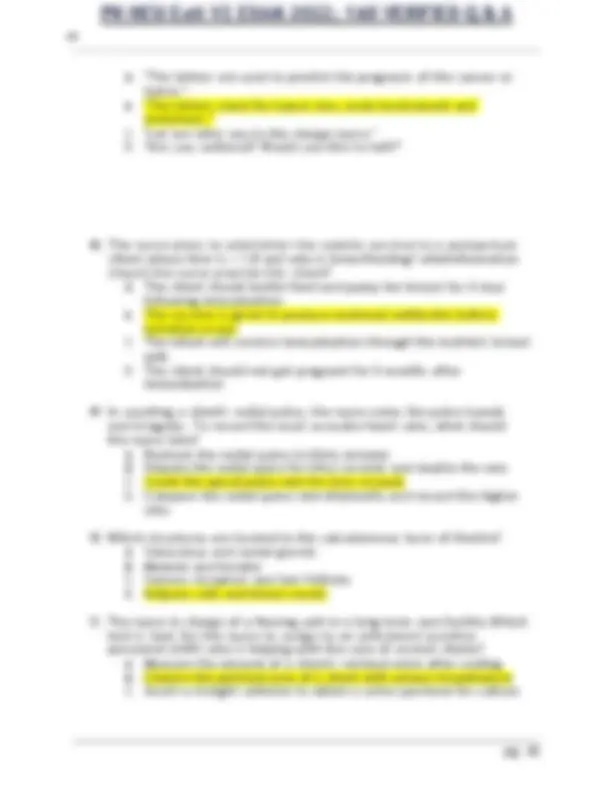
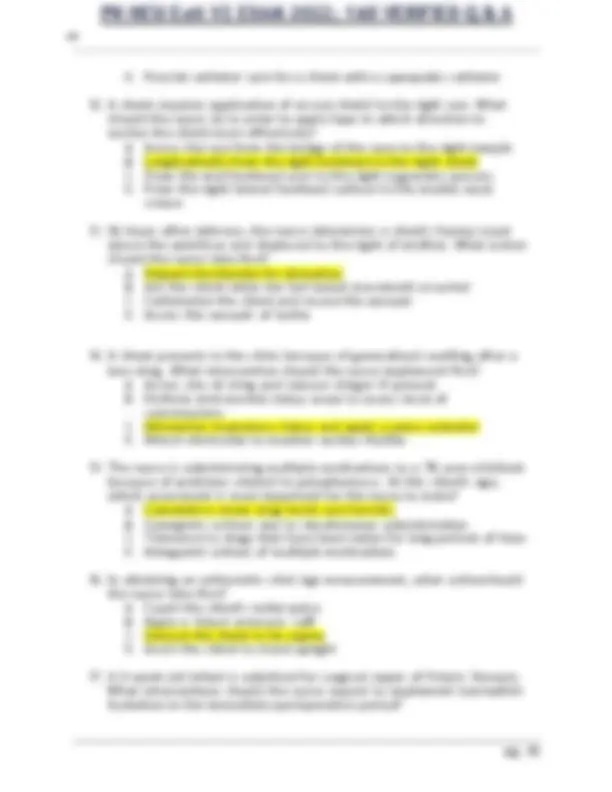
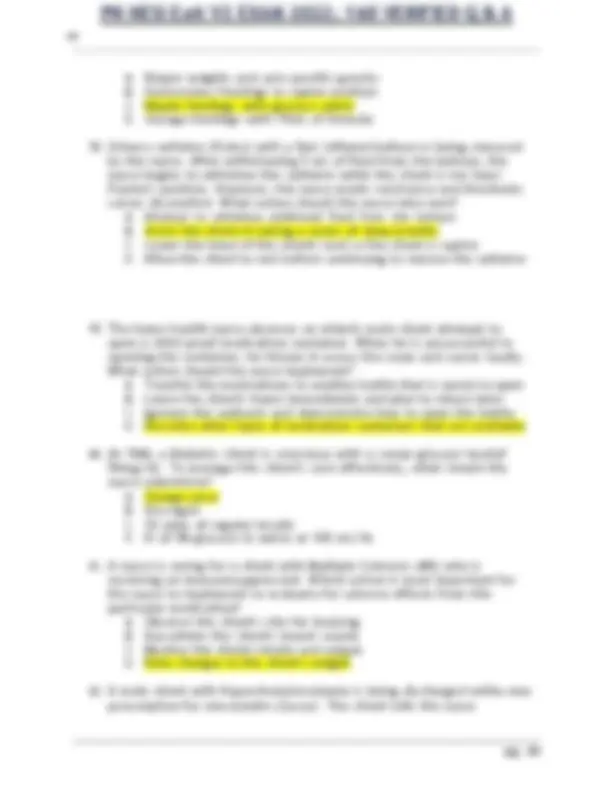
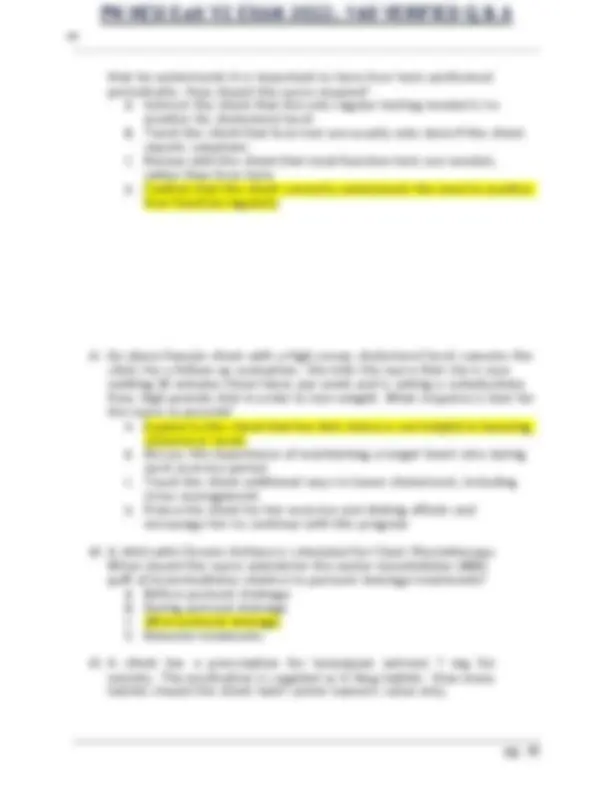
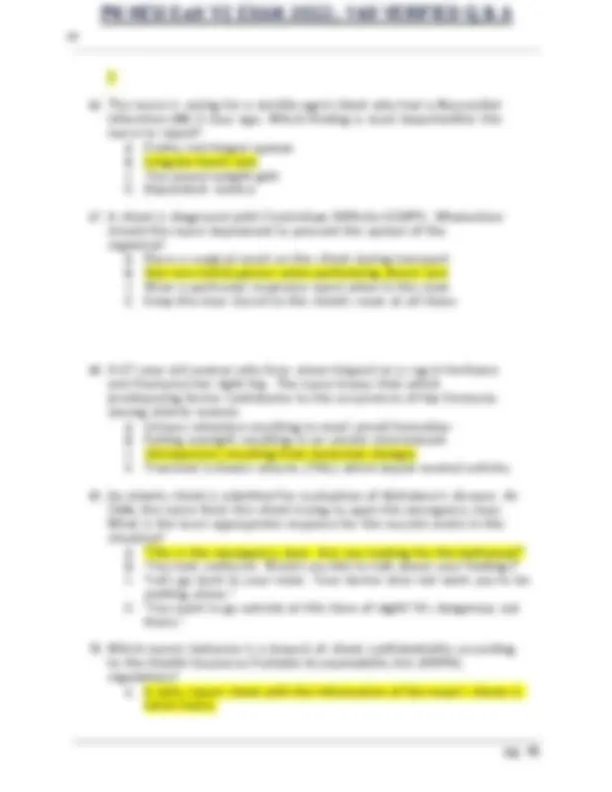
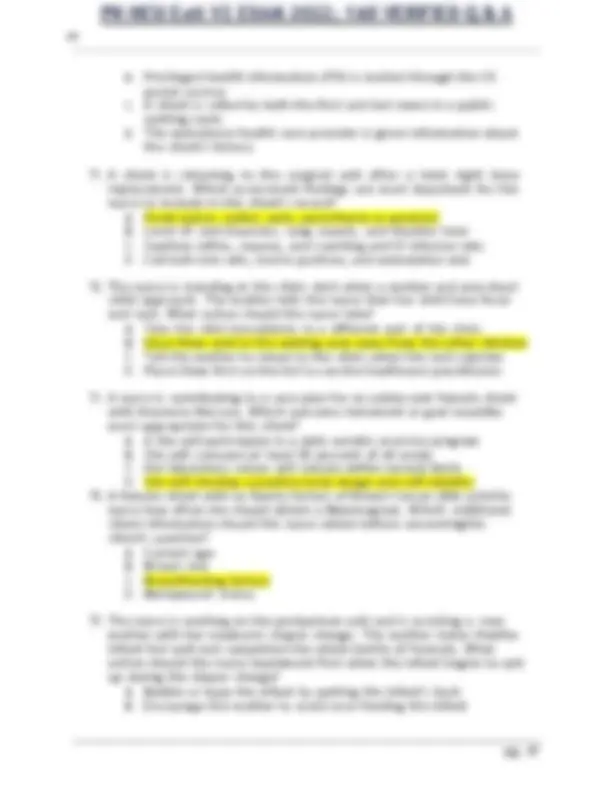
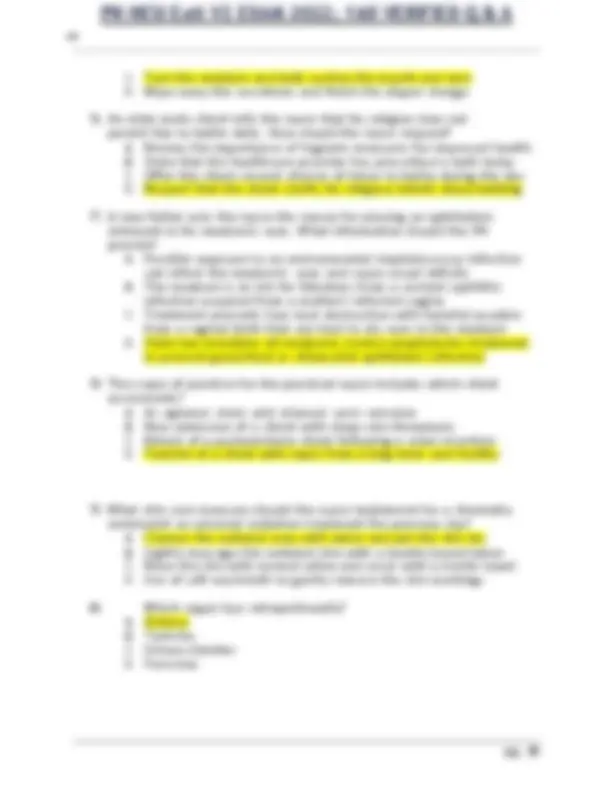
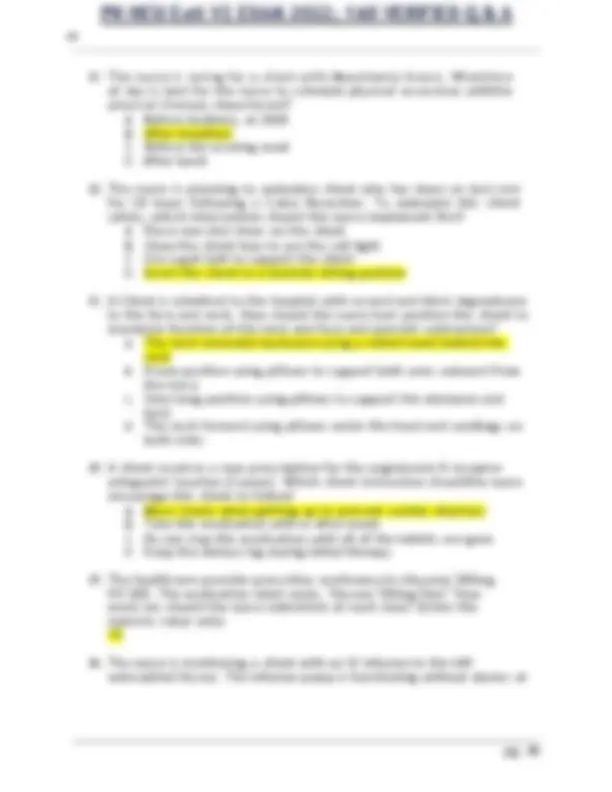
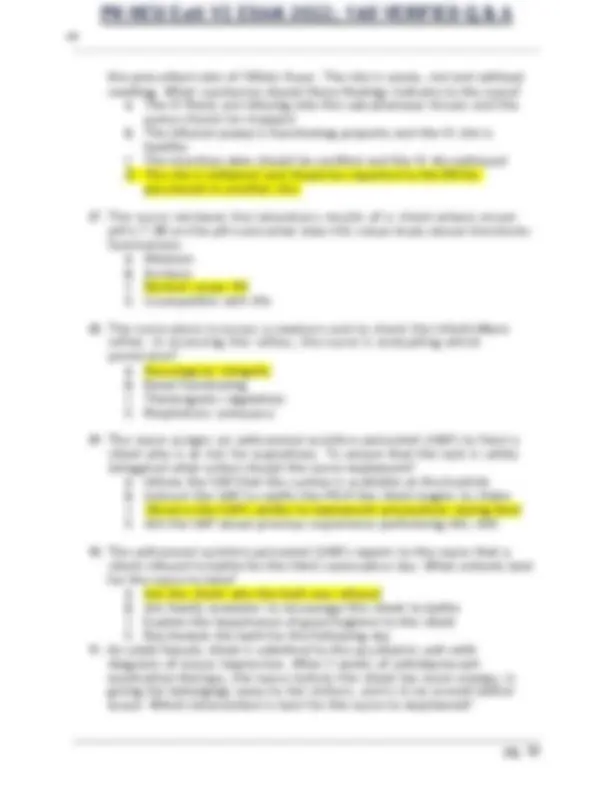
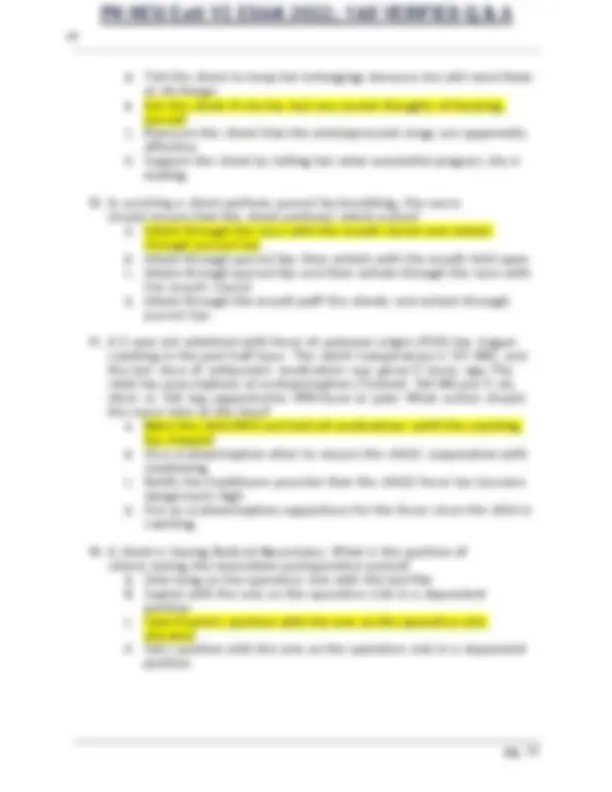
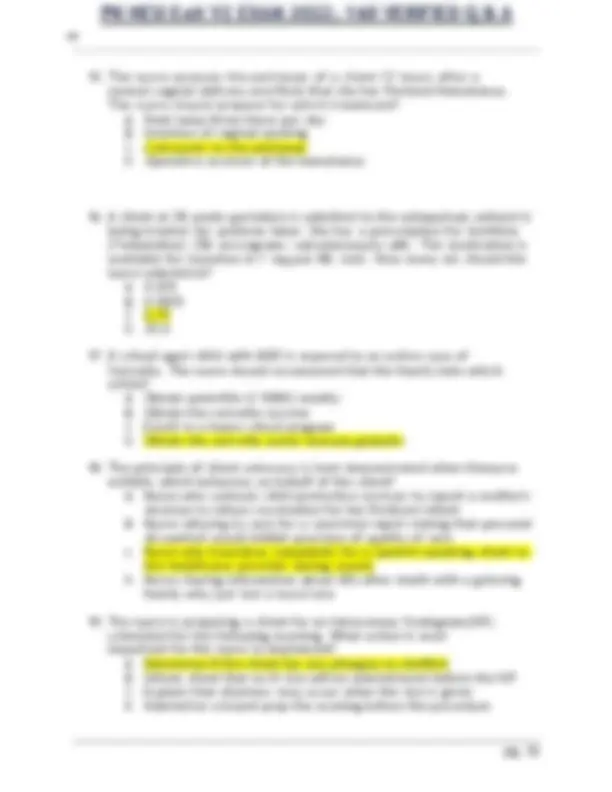
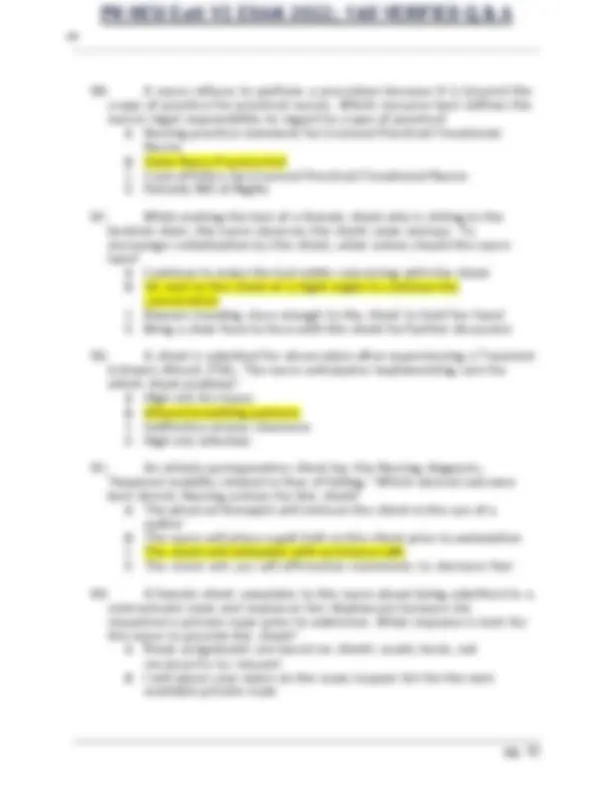
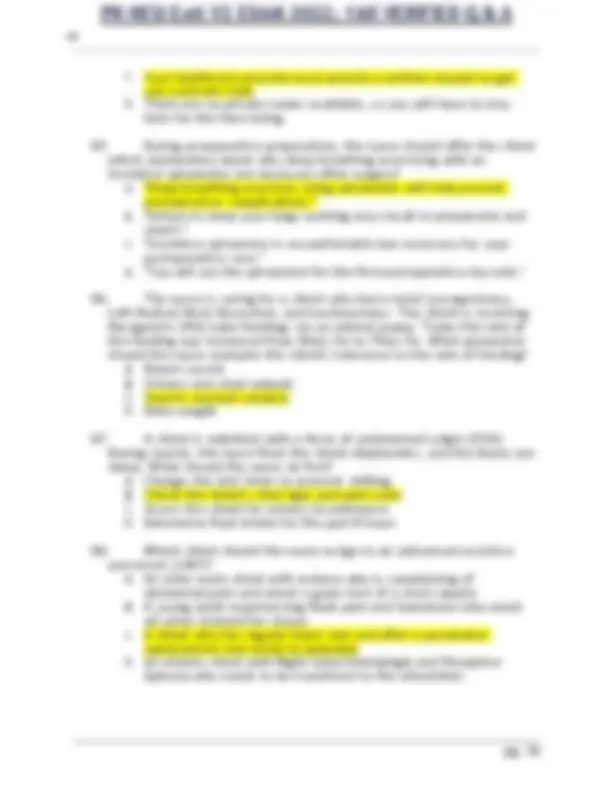
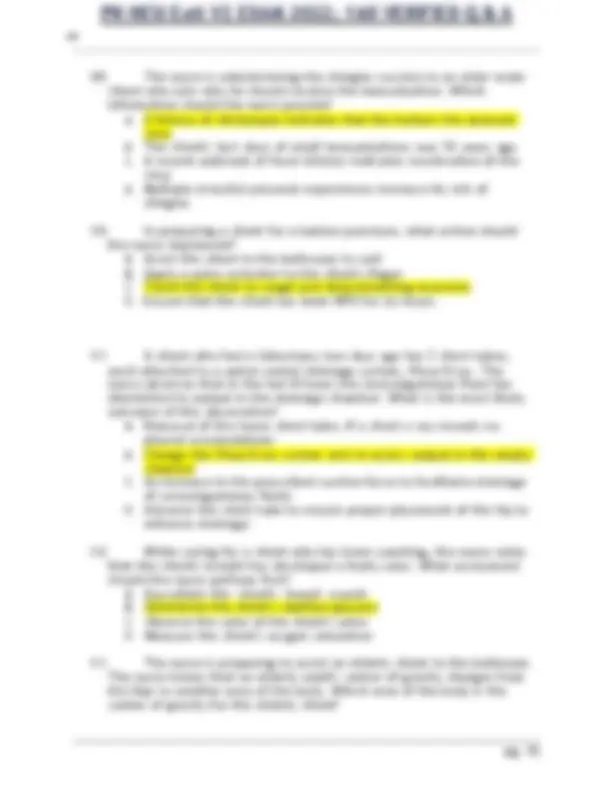
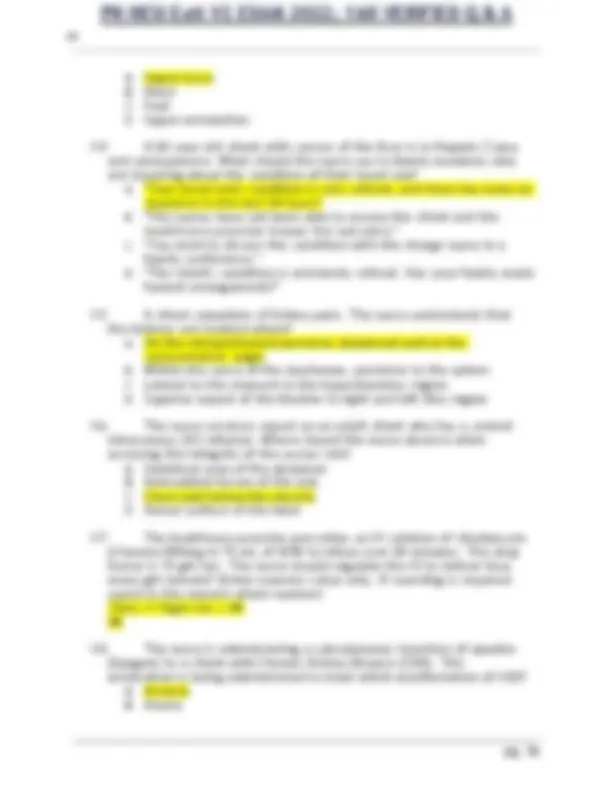
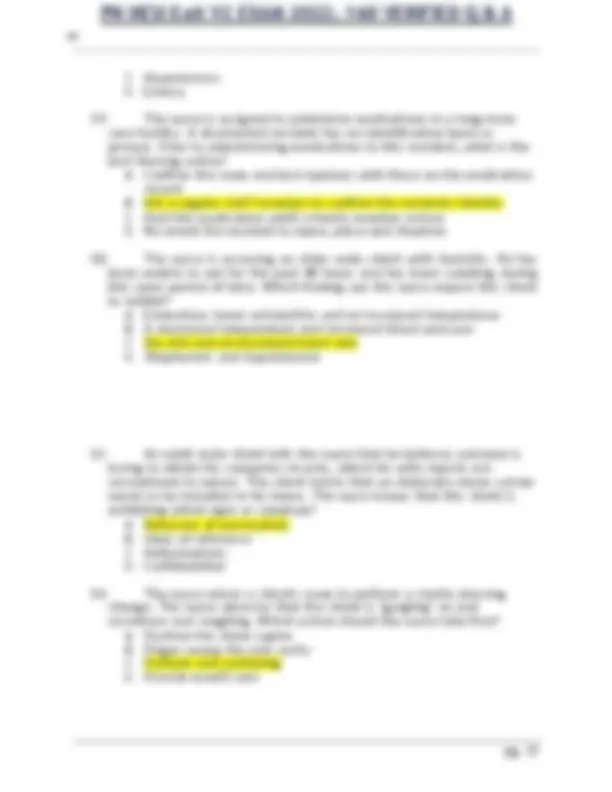
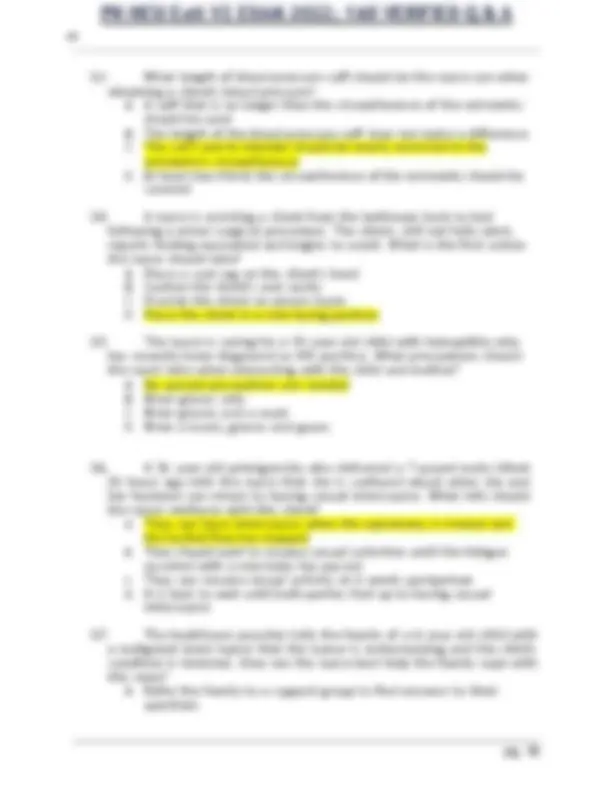
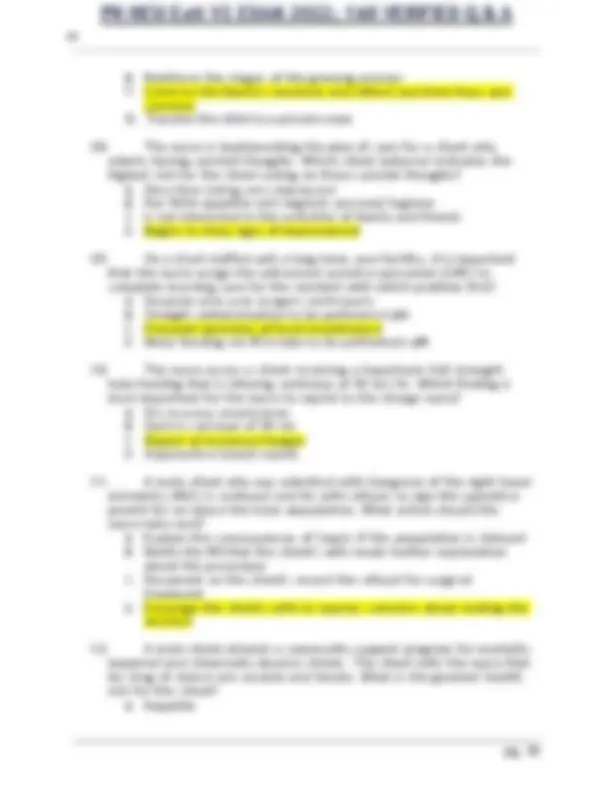

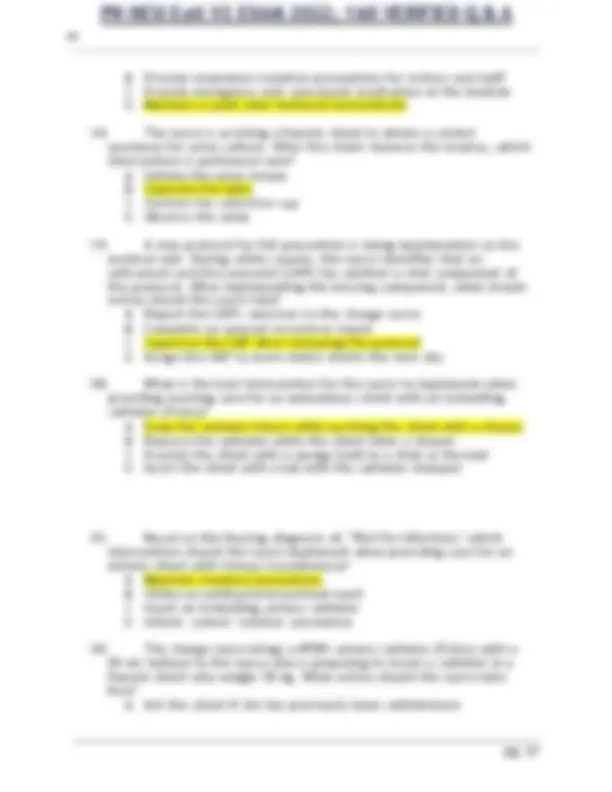
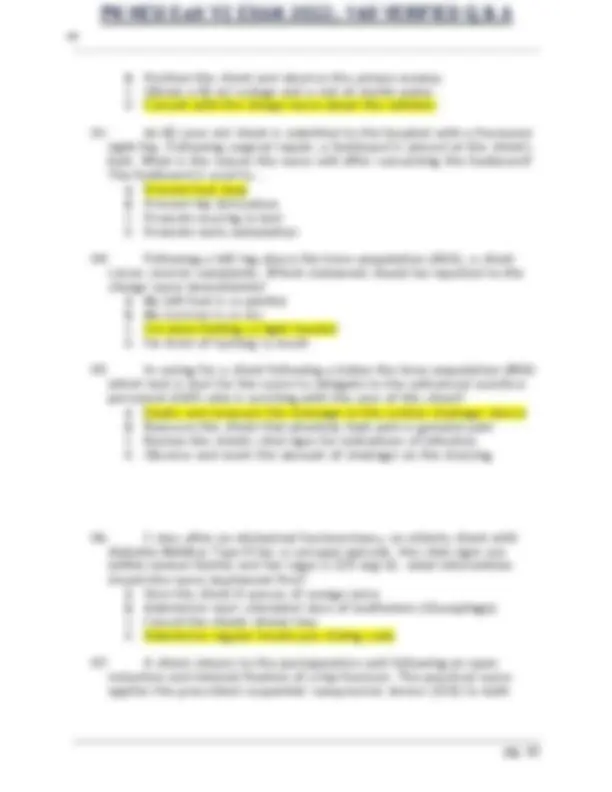
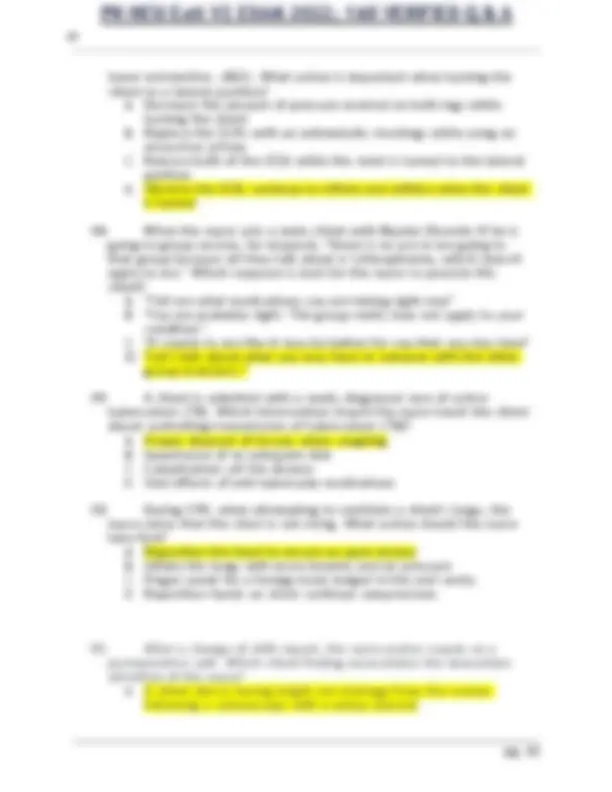
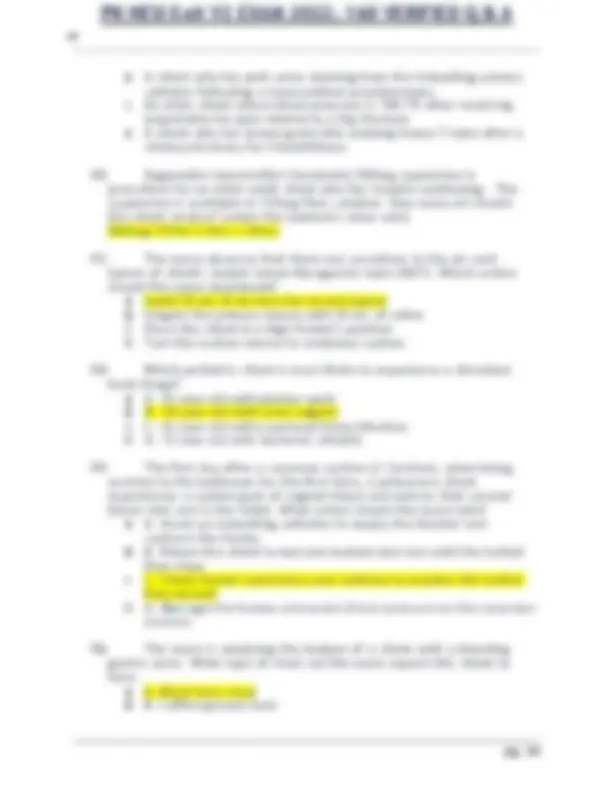
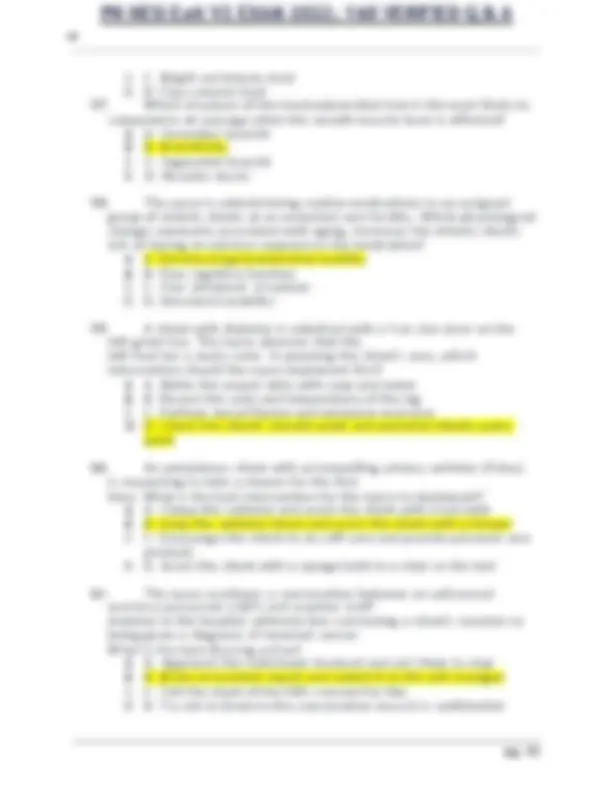
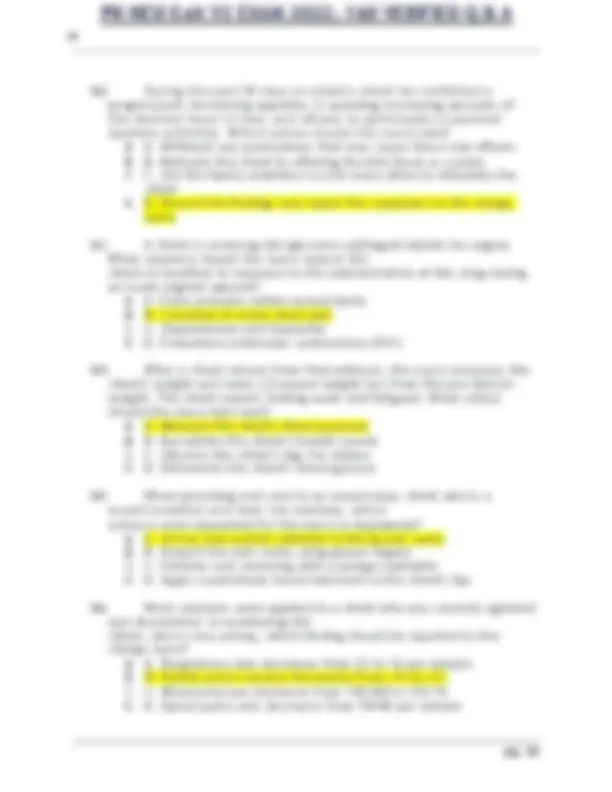
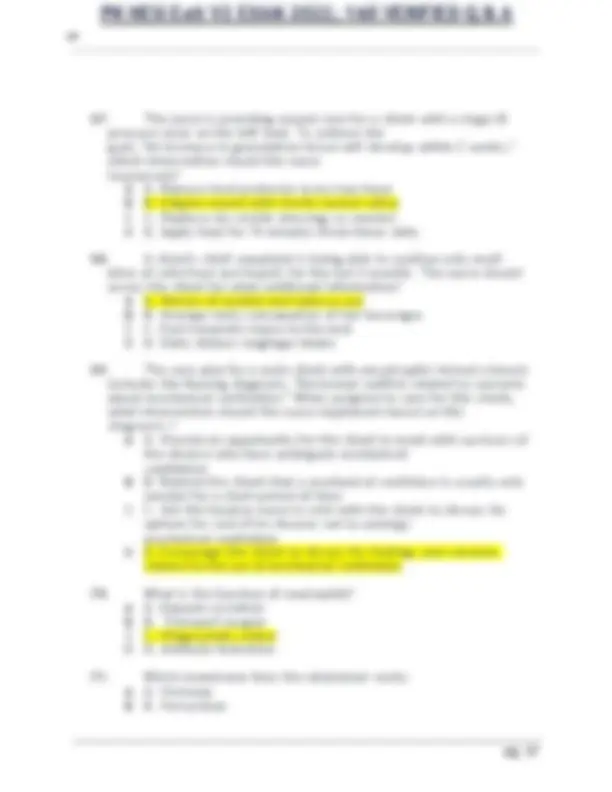

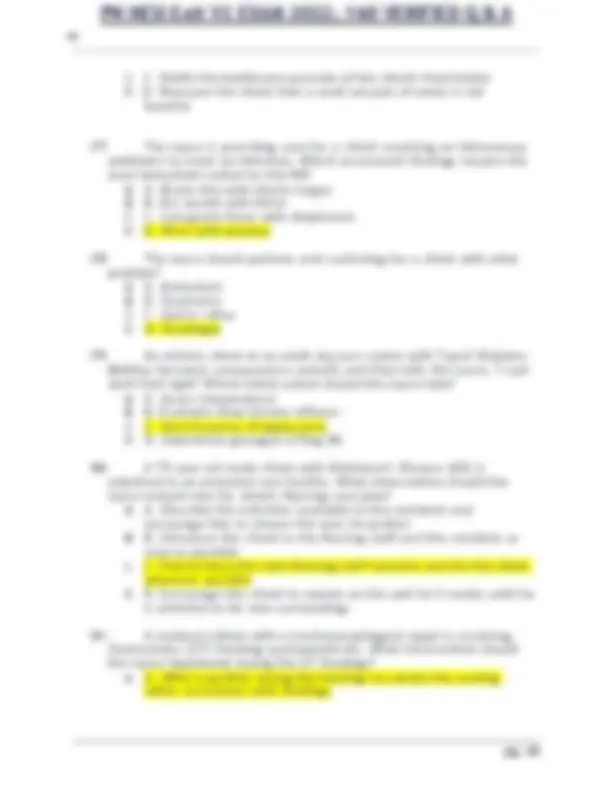
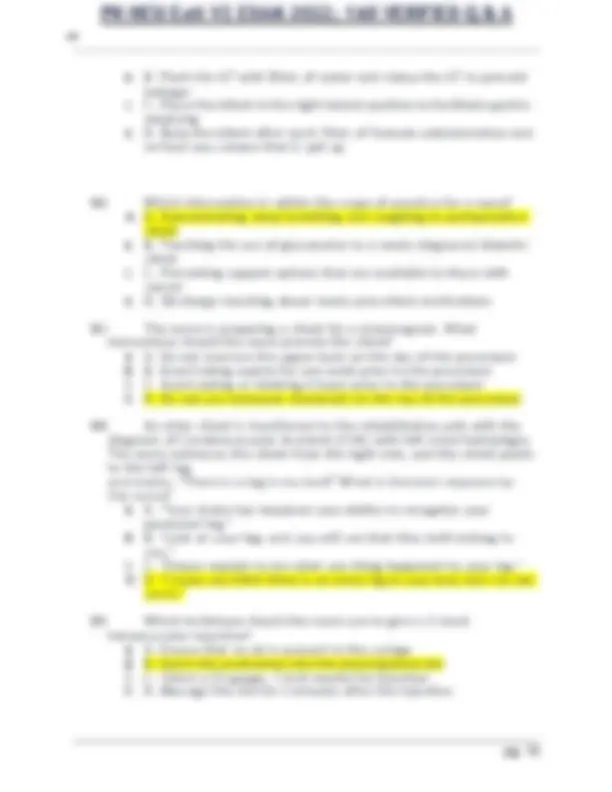
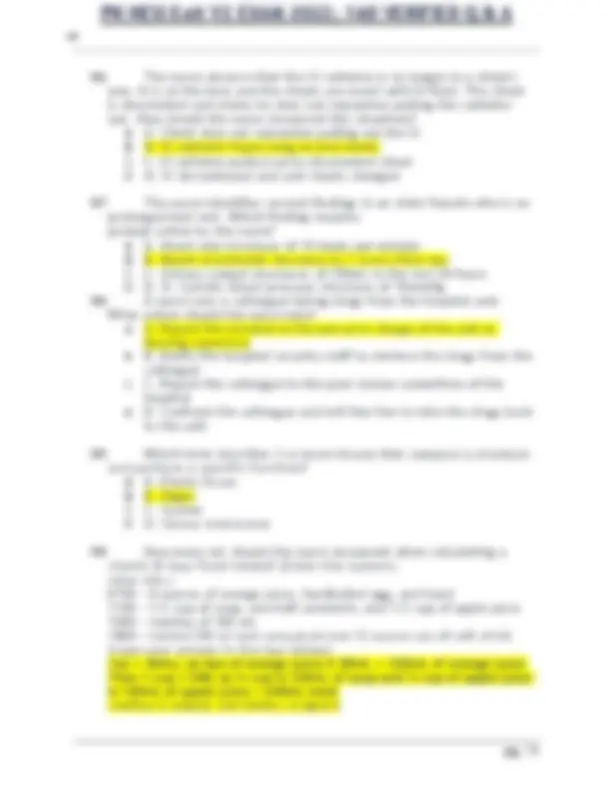
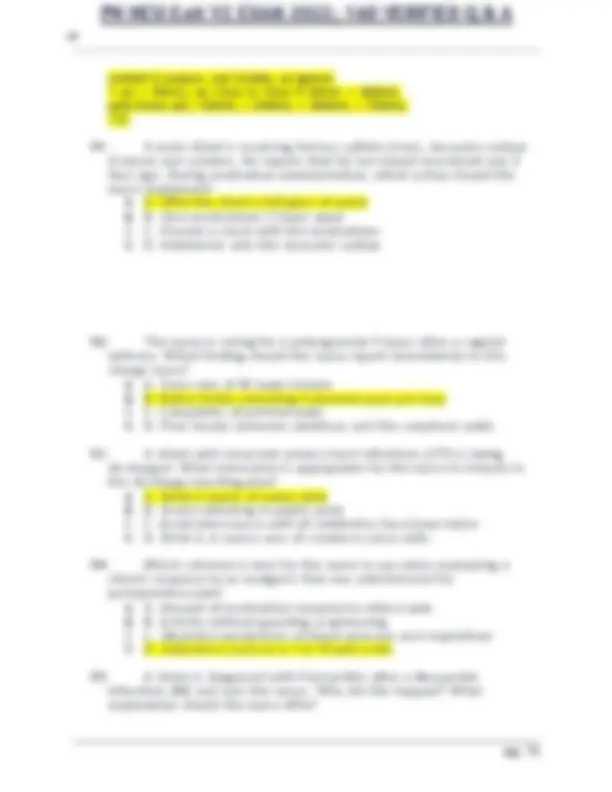
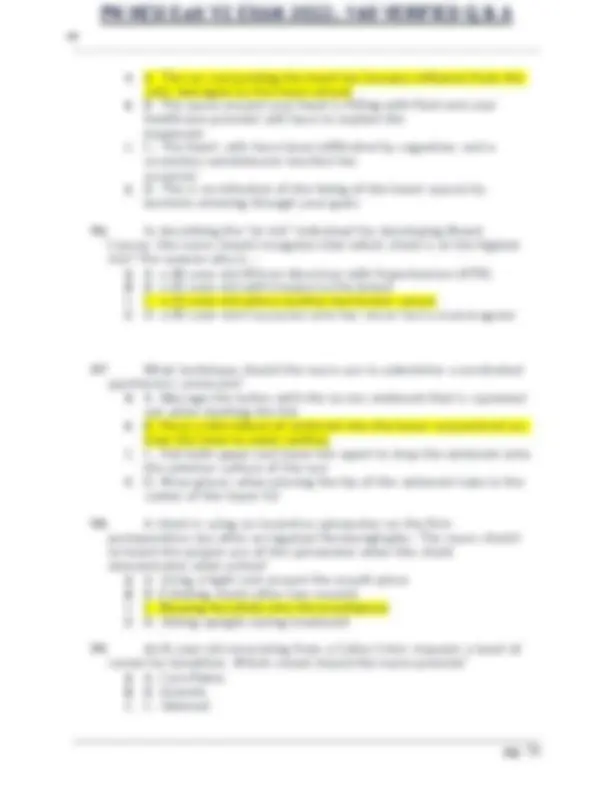
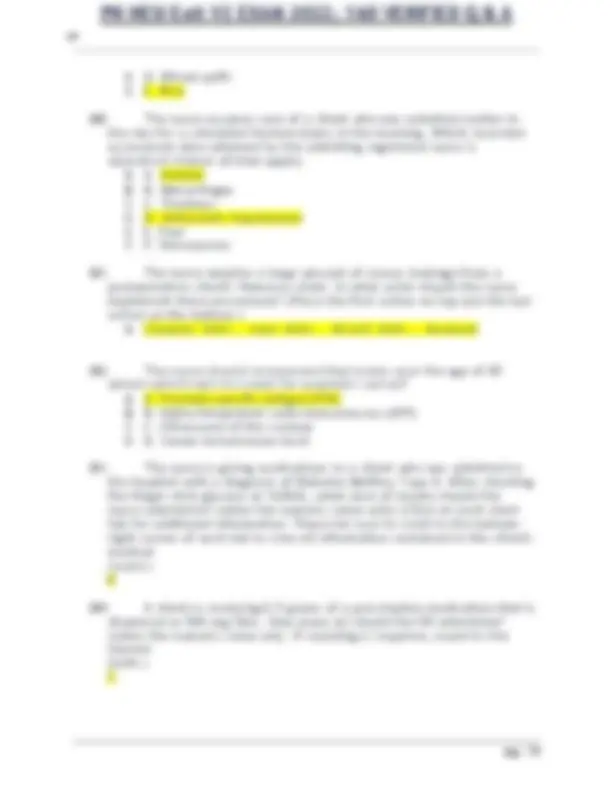
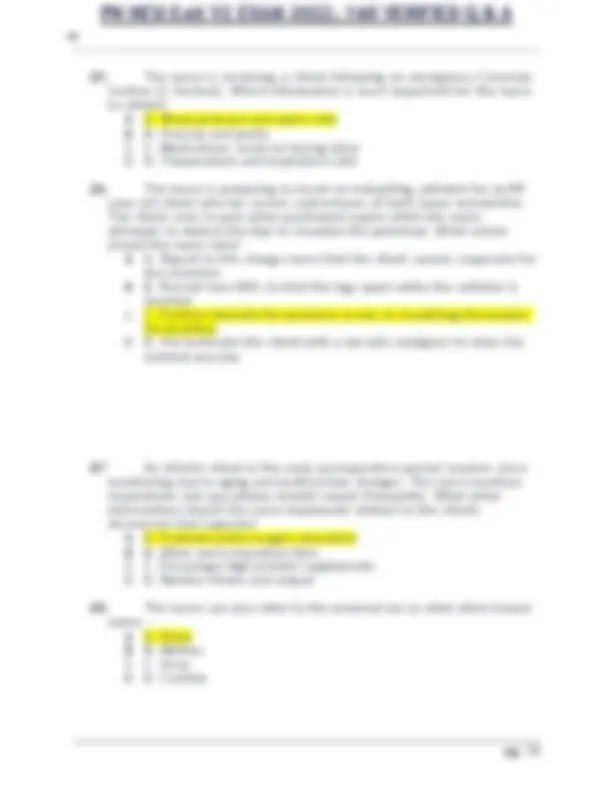
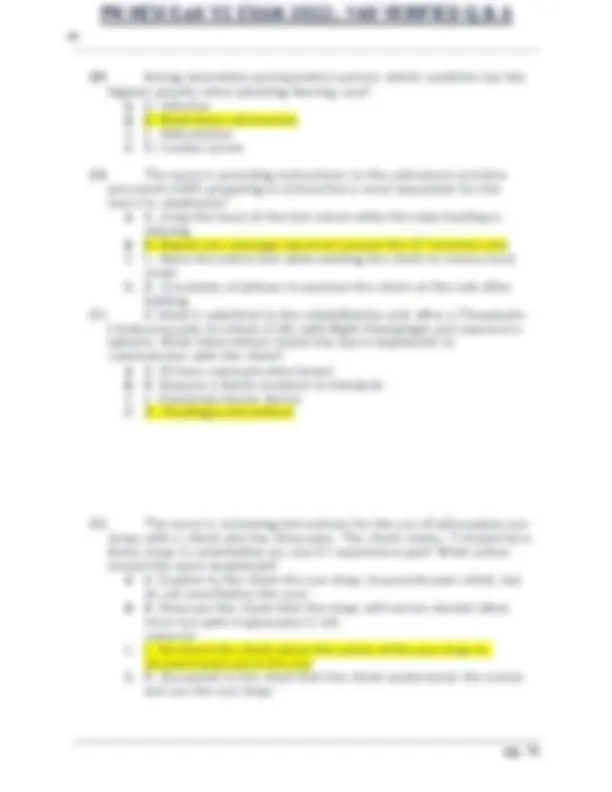
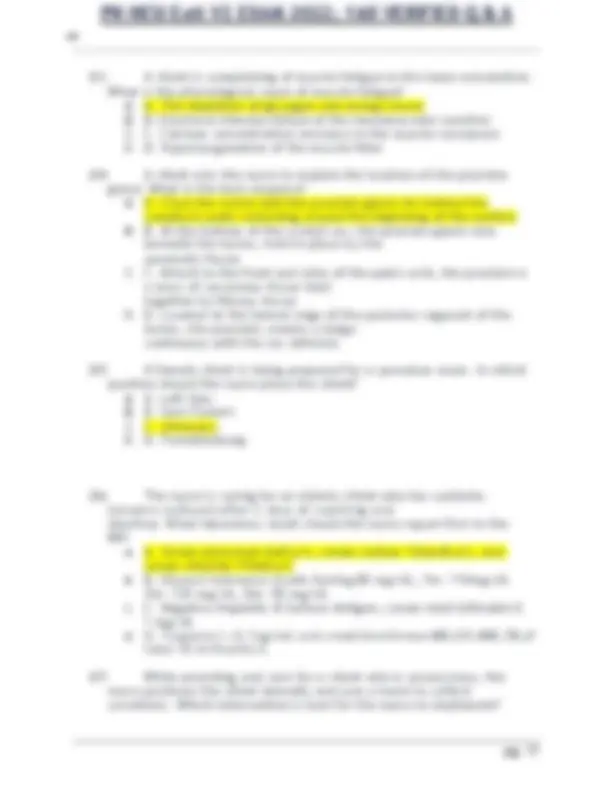
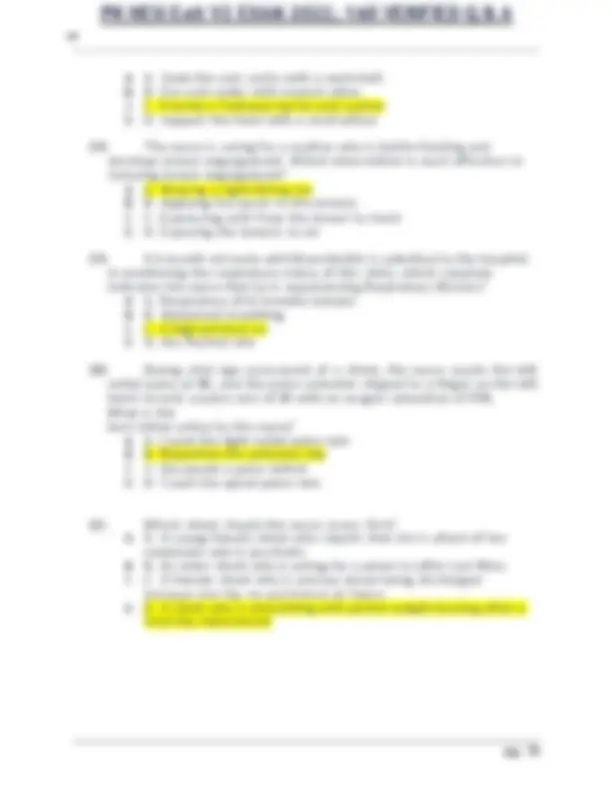


Study with the several resources on Docsity

Earn points by helping other students or get them with a premium plan


Prepare for your exams
Study with the several resources on Docsity

Earn points to download
Earn points by helping other students or get them with a premium plan
Community
Ask the community for help and clear up your study doubts
Discover the best universities in your country according to Docsity users
Free resources
Download our free guides on studying techniques, anxiety management strategies, and thesis advice from Docsity tutors
PN HESI Exit V2 EXAM 2022 160 VERIFIED Q & A.pdf
Typology: Exams
1 / 78

This page cannot be seen from the preview
Don't miss anything!







































































04
04 subclavian vein. The nurse prevents dislodgement of the pacing catheter by implementing which intervention? a. Limiting movement and abduction of the left arm b. Limiting movement and abduction of the right arm c. Assisting the client to get out of bed and ambulate with a walker 4. Having the physical therapist do active range of motion to the right arm
04 and cool and the client verbalizes some numbness and tingling of the foot. Which interpretation should the nurse make of these findings? a. The boot has not yet dried. b. The boot is controlling leg edema. c. The boot is impairing venous return. d. The boot has been applied too tightly.
04
04 a. Reviews the intake and output records for the last 2 days b. Prescribes daily weights starting on the following morning c. Changes the time of diuretic administration from morning to evening d. Requests a sodium restriction of 1 g/day from the health care provider
04 c. how the cardiac monitor works?" d. "I can appreciate your concerns. Your family can stay with you tonight if you want them to."
04 a. Oxygen assists in calming the client. b. Oxygen prevents the development of any thrombus formation. c. pectoris pain. d. Oxygen dilates the blood vessels, supplying more nutrients to the heart muscle.
04
04
04
04 understands the instructions if the client states that which food item will be avoided? a. Catsup b. Sherbet c. Cooked cereal d. Leafy green vegetables
04
04 perform which intervention to care for this client in a holistic manner? a. Tell the client that this is not allowed. b. Tell the family member not to take the client outdoors. c. Give the client a cup of hot coffee before going outside. d. going outside.
04